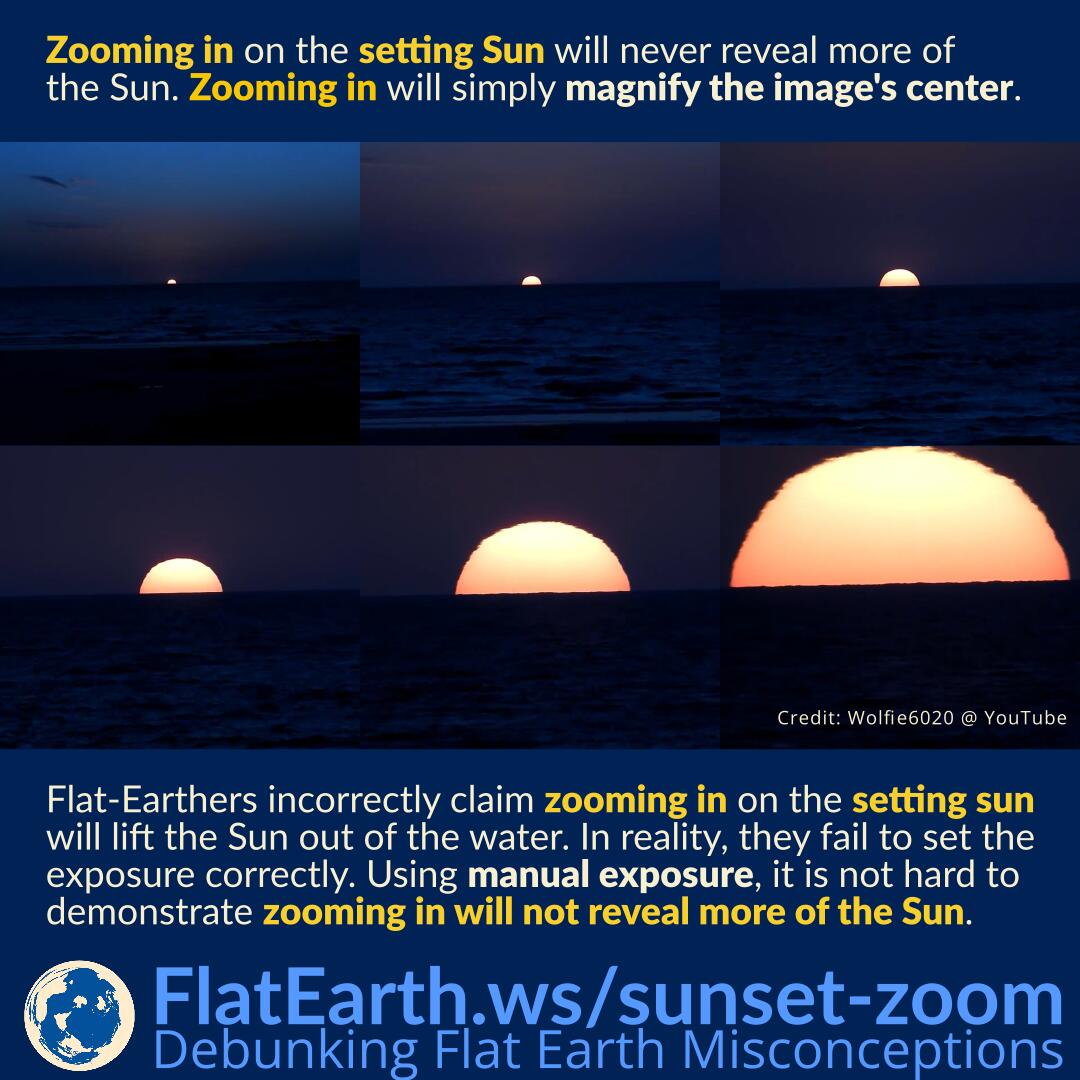Camera zoom works by enlarging the center portion of the image, or in other words, by making its field-of-view narrower. Zooming in on the setting sun will not reveal more of the sun and will only enlarge the size of the sun in the resulting image.
Flat-Earthers claim that zooming in on a setting sun will reveal the full sun and somehow lift it out of the water. In reality, they used incorrect exposure settings, making the sun still above the horizon appear already half-obscured by Earth’s curvature.
Zooming on the setting sun will never reveal the sun already obstructed by Earth’s curvature.
When fully zoomed in, the sun appears larger and fills more of the frame. As a result, the frame is dominated by a bright object (the sun). The auto-exposure system will thus compensate by lowering the exposure. The sun will appear in the correct exposure with a clearly defined edge. This is done by sacrificing the appearance of all the other objects, which now appear dark.
On the other hand, the sun appears very small when fully zoomed out and occupies far less of the frame. The picture is dominated by dark objects, like the evening sky and the ocean. The autoexposure system now thinks the photographer wants to take a picture of the entire landscape and compensate by raising the exposure. The sky and ocean appear correctly exposed at the expense of the sun, which now looks too bright. Not only that, the glare around the sun will appear too bright as well, and it can be impossible to distinguish the sun from its glare. Flat-Earthers think the glare is part of the sun and incorrectly assume the sun is larger than it is.
To take a good picture of the sun during sunset, it is sometimes necessary to use manual exposure. The autoexposure system can only guess the intention of the photographer. Sometimes it guesses wrong, like when the intended object is far brighter than its surroundings or vice versa.
References
- Sunset, Camera Zooming, and Autoexposure – FlatEarth.ws
- Sun Glare Makes the Sun Appear Larger – FlatEarth.ws
- Exposure (photography) – Wikipedia


